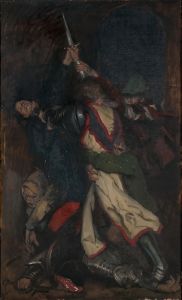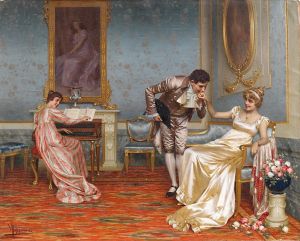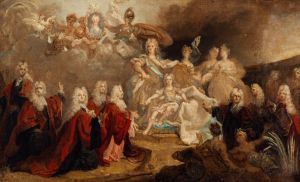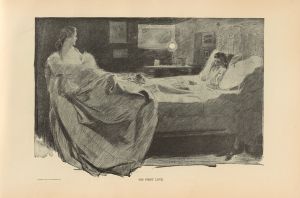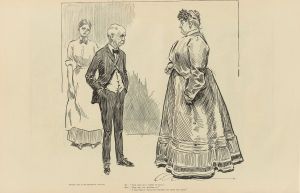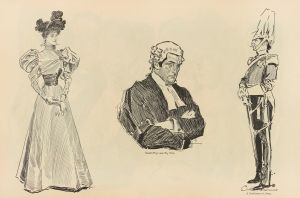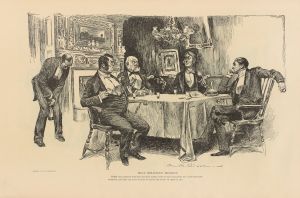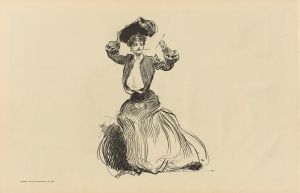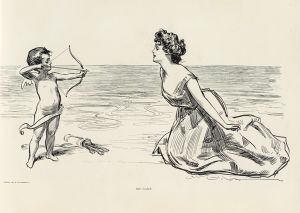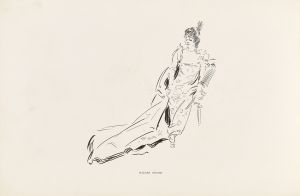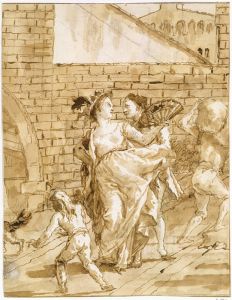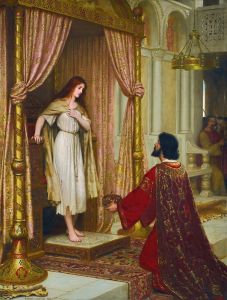
Do women propose
A hand-painted replica of Charles Dana Gibson’s masterpiece Do women propose, meticulously crafted by professional artists to capture the true essence of the original. Each piece is created with museum-quality canvas and rare mineral pigments, carefully painted by experienced artists with delicate brushstrokes and rich, layered colors to perfectly recreate the texture of the original artwork. Unlike machine-printed reproductions, this hand-painted version brings the painting to life, infused with the artist’s emotions and skill in every stroke. Whether for personal collection or home decoration, it instantly elevates the artistic atmosphere of any space.
"Do women propose?" is a notable illustration by Charles Dana Gibson, an influential American graphic artist best known for his creation of the "Gibson Girl," an iconic representation of the American woman at the turn of the 20th century. The illustration was published in the late 19th or early 20th century, a period when Gibson's work was widely circulated in popular magazines such as Life, Harper's Weekly, and Scribner's.
Charles Dana Gibson was born on September 14, 1867, in Roxbury, Massachusetts. He studied at the Art Students League in New York City, where he honed his skills in drawing. Gibson's career took off when he began contributing to Life magazine in the 1880s, eventually becoming one of the most celebrated illustrators of his time. His work often depicted the social dynamics and cultural norms of the era, with a particular focus on the roles and expectations of women.
The "Gibson Girl" became a cultural phenomenon, symbolizing a new standard of femininity that combined beauty, independence, and confidence. This archetype was characterized by an hourglass figure, upswept hair, and fashionable attire, often depicted in various social settings that highlighted her poise and self-assurance.
"Do women propose?" fits within this broader context of Gibson's exploration of gender roles and societal expectations. The illustration humorously addresses the question of whether women, in a reversal of traditional gender roles, might take the initiative in proposing marriage. This theme reflects the evolving attitudes towards gender and courtship during the late 19th and early 20th centuries, a time when women were beginning to assert more independence and challenge conventional norms.
The artwork itself typically features a scene with a woman and a man, often with the woman in a position of agency or authority, subtly suggesting the possibility of her proposing. The humor and irony in Gibson's work lie in the juxtaposition of traditional gender roles with the emerging modern woman, a theme that resonated with audiences of the time.
Gibson's illustrations, including "Do women propose?", were not only popular for their artistic quality but also for their commentary on social issues. They provided a lens through which the public could examine and discuss the changing dynamics of gender and relationships. Gibson's work remains significant for its ability to capture the spirit of an era and its influence on the perception of women in society.
In summary, "Do women propose?" is a reflection of Charles Dana Gibson's keen observation of societal changes and his ability to encapsulate these shifts in his art. Through his illustrations, Gibson offered a humorous yet insightful commentary on the evolving roles of women, contributing to the broader discourse on gender and equality during a pivotal time in American history.





